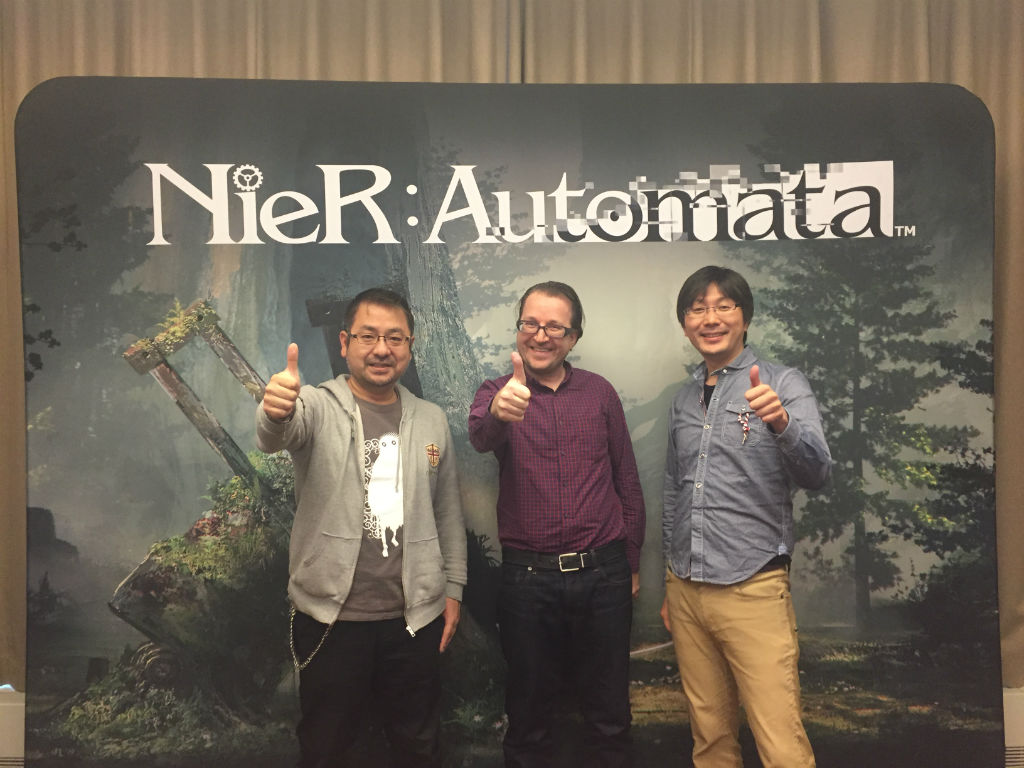
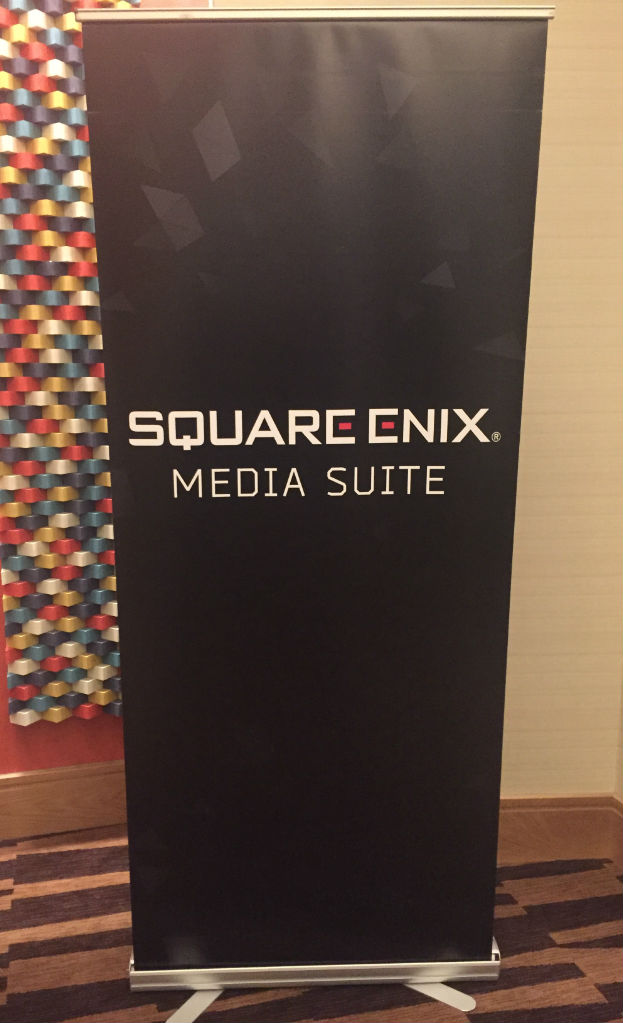 Square Enix comes to Toronto
Square Enix comes to Toronto
Square Enix, the Japanese gaming giant revered worldwide for their breathtaking role-playing game experiences, recently came to Toronto for an exclusive media preview of their phenomenal holiday line-up, headed up by Final Fantasy XV. Little did I know at the time though, Square Enix also had a secret opportunity waiting for me upon my arrival: the chance to be among the first in the world to play their highly anticipated 2017 action-RPG NieR: Automata.
Greeting me inside the demo room was none other than Square Enix’s Yosuke Saito, the producer of both games in the Nier series, and Junichi Ehara, the Co-Producer for Nier: Automata. It was a bit surreal seeing them in-person in Toronto, as I’ve previously only ever met Square Enix’s development staff at major international gaming tradeshows like E3 and Tokyo Game Show. A Square Enix PR rep later told me that the company has a renewed focus on Canada, which is why they flew Saito and Ehara here all the way from Japan. That was awesome to hear.
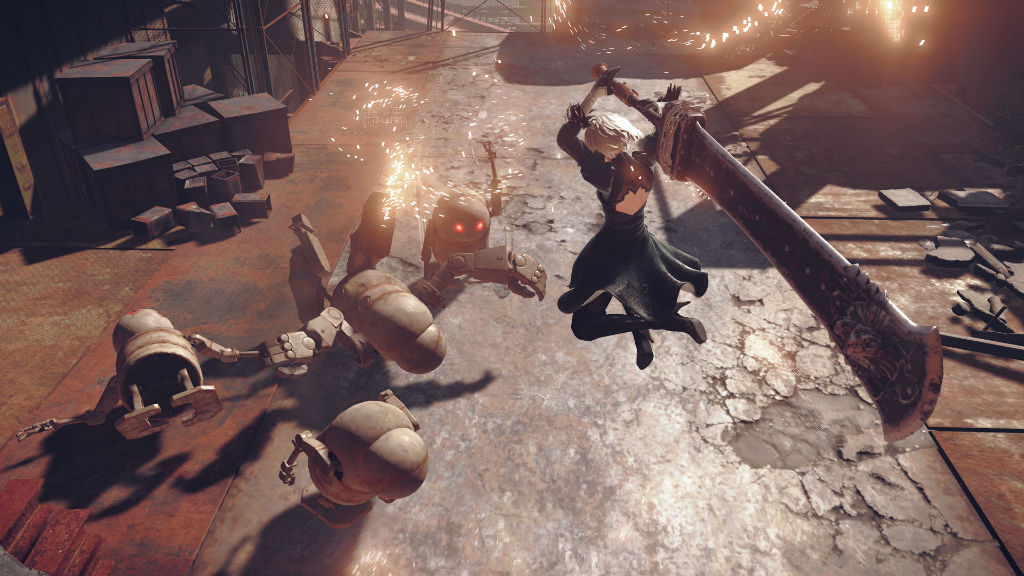 A video game cult classic
A video game cult classic
Before getting hands-on time with Nier: Automata, Saito-san insisted he preface the new game by speaking to a few Powerpoint slides he prepared delving into the franchise’s history. As someone who played (and thoroughly enjoyed) the original game, which released on PS3 and Xbox 360 more than six years ago, Saito-san’s comments really rang true. While he said fans especially highly praised Nier for its emotional storyline, mood-heightening soundtrack, and characters you feel genuine connections to, he heard loud and clear that improvements were needed in the game’s action sequences. He also emphasized that the Metacritic score of 68 (PlayStation 3) may not tell the whole story, as players who invested a lot of time into the game generally have a more positive view of the game’s overall quality. That’s why Nier is so frequently mentioned in discussions about the most underappreciated cult classic video games of all time—particularly among serious RPG fans.
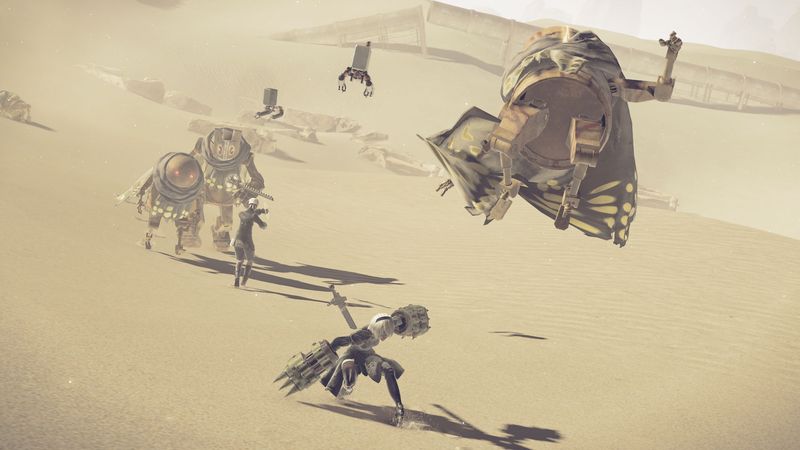 This time around, with Nier: Automata, Saito-san is aiming to give players the total package. To address the gameplay concerns from the first game, Square Enix has handed over development duties to Platinum Games—the award-winning studio recognized globally for their incredible action-oriented games, including Bayonetta, Vanquish, and Metal Gear Rising: Revengeance. Not only is Platinum Games bringing their signature fast, fluid gameplay to Nier: Automata, but also a deep understanding of what worked, and what didn’t with the original game, given that many of its staff were part of its diehard cult following.
This time around, with Nier: Automata, Saito-san is aiming to give players the total package. To address the gameplay concerns from the first game, Square Enix has handed over development duties to Platinum Games—the award-winning studio recognized globally for their incredible action-oriented games, including Bayonetta, Vanquish, and Metal Gear Rising: Revengeance. Not only is Platinum Games bringing their signature fast, fluid gameplay to Nier: Automata, but also a deep understanding of what worked, and what didn’t with the original game, given that many of its staff were part of its diehard cult following.
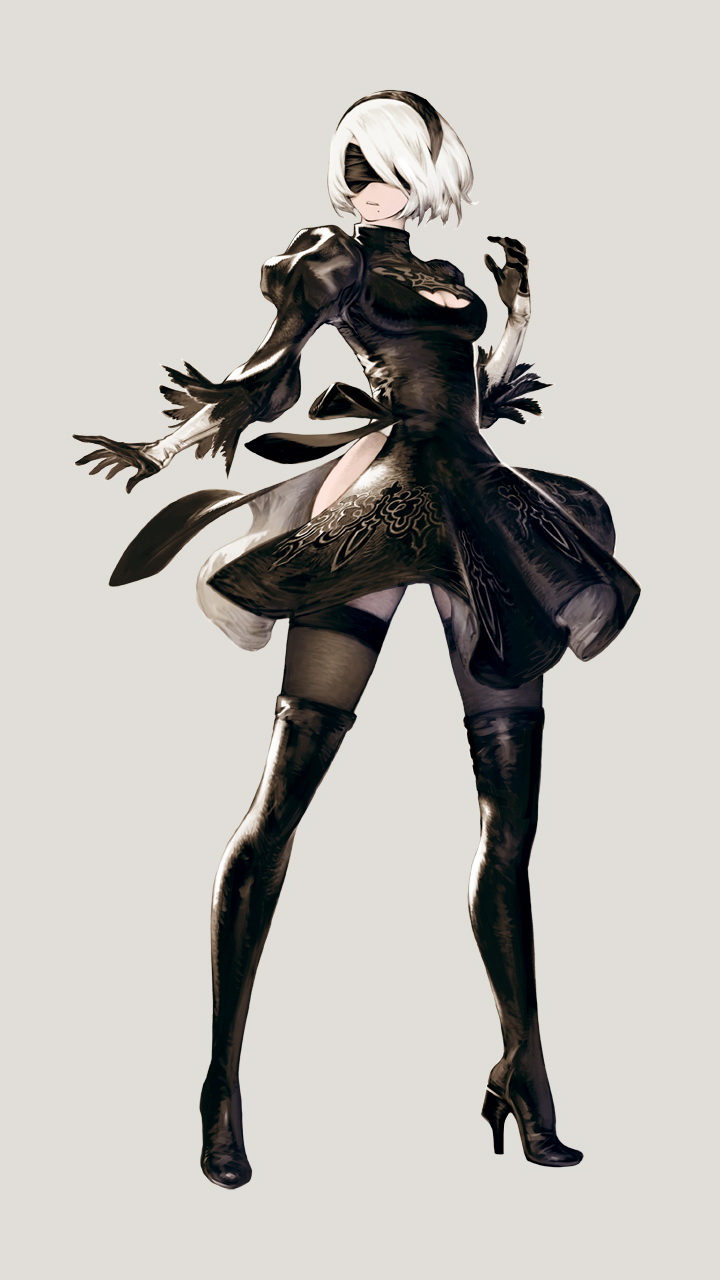 Hands-on time begins
Hands-on time begins
Saito-san told me that the roughly 20 minute demo of Nier: Automata I was about to play takes place at the very beginning of the game, following an open sequence that I didn’t get to see. If you’ve never played the original game—that’s okay—as Nier: Automata takes place thousands of years later and the plots aren’t directly connected; however, there will be a few returning characters sure to make long-time players smile. The character I controlled was called 2B, a lithe, all-purpose battle android created by humans to fight machine lifeforms that have invaded the earth. Most humans, as it turns out, have fled to the moon and are using “YoRHa” infantry androids, like 2B, to wage their proxy battle with the alien intruders. Joining 2B on her mission was another YoRHa android, the youthful 9S, who appears to be an aircraft specialist and provides 2B with reconnaissance intel.
Boss fight set the bar high, and it stayed there
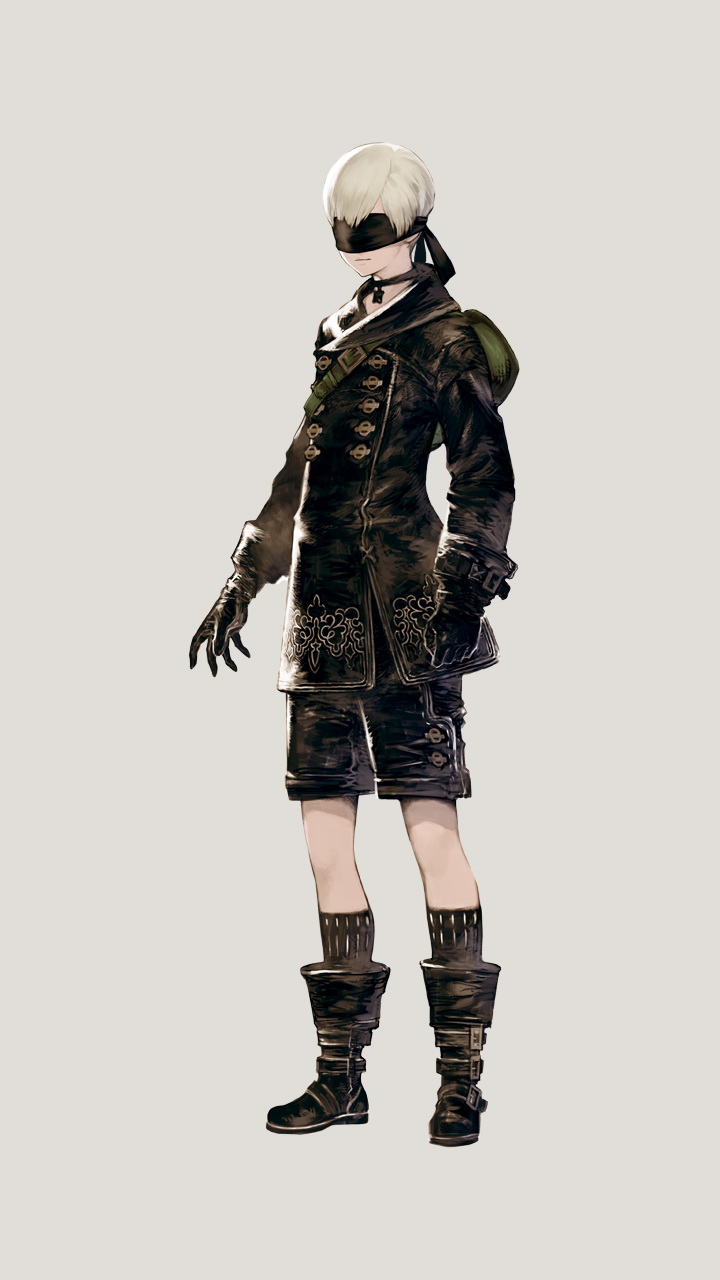 Almost immediately I was thrust into a boss battle against a massive defensive mechanical system that shot out a huge killer buzz saw. Reminiscent of God of War, a series that typically starts off by throwing you in the deep end with an eye-popping boss battle, this action sequence was an exhilaration display of everything that great about Nier: Automata. First off, the beautifully bleak industrial complex this boss encounter took place in was mesmerizing in all its dilapidated glory. This is a post-apocalyptic world ravaged by an everlasting war, and similar to Bethesda’s Fallout, you can help but marvel at how dreadfully wretched everything is. Secondly, at a blistering fast 60fps running on PS4, the action was consistently fast and furious, never dipping no matter how much was happening on-screen. Thirdly, and most importantly, I was amazed at how natural the controls felt—blending bits and pieces of Devil May Cry with Bayonetta—after just a few minutes of game time. With virtually no guidance from Saito-san, I was effortlessly hacking and slashing the buzz saw boss using B2’s light and strong sword combo strikes, along with commanding her hovering turret pod to fire bullets and charged laser shots for long-range damage. Dodging—performed with a tap of the R2 button—was extremely responsive and transitioned smoothly into attacks, so it too quickly entered my repertoire of moves.
Almost immediately I was thrust into a boss battle against a massive defensive mechanical system that shot out a huge killer buzz saw. Reminiscent of God of War, a series that typically starts off by throwing you in the deep end with an eye-popping boss battle, this action sequence was an exhilaration display of everything that great about Nier: Automata. First off, the beautifully bleak industrial complex this boss encounter took place in was mesmerizing in all its dilapidated glory. This is a post-apocalyptic world ravaged by an everlasting war, and similar to Bethesda’s Fallout, you can help but marvel at how dreadfully wretched everything is. Secondly, at a blistering fast 60fps running on PS4, the action was consistently fast and furious, never dipping no matter how much was happening on-screen. Thirdly, and most importantly, I was amazed at how natural the controls felt—blending bits and pieces of Devil May Cry with Bayonetta—after just a few minutes of game time. With virtually no guidance from Saito-san, I was effortlessly hacking and slashing the buzz saw boss using B2’s light and strong sword combo strikes, along with commanding her hovering turret pod to fire bullets and charged laser shots for long-range damage. Dodging—performed with a tap of the R2 button—was extremely responsive and transitioned smoothly into attacks, so it too quickly entered my repertoire of moves.
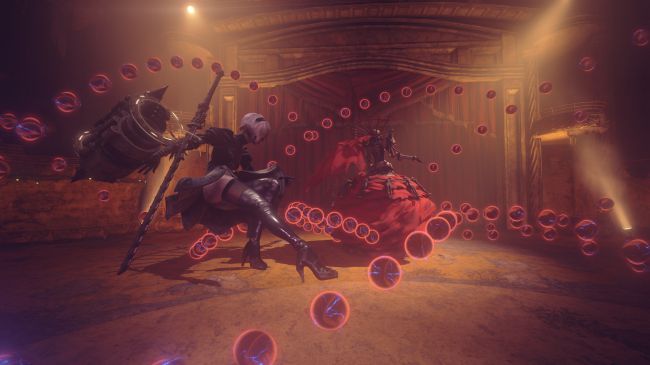
Multiple genres in one game
Another really impressive aspect of the game is how smoothly the camera shifts from one perspective to another. Like in the first game, Nier: Automata contains influences from classic genres ranging from 2D side-scrolling action, to top-down shooters, and each camera transition I encountered was flawless executed. In just a matter of minutes the on-screen action would seamlessly switch from 3D hack ‘n slash combat as thrilling as that in Metal Gear Rising, to side-scrolling sequences reminiscent of Ninja Gaiden, to intense top-down arena battles that brought back fond memories of Contra 3. Fans of bullet hell shoot ‘em ups will also be pleased to know that Nier: Automata has segments where enemies literally fill the screen with a barrage of red, globby bullets that you need to dodge or shoot and destroy.
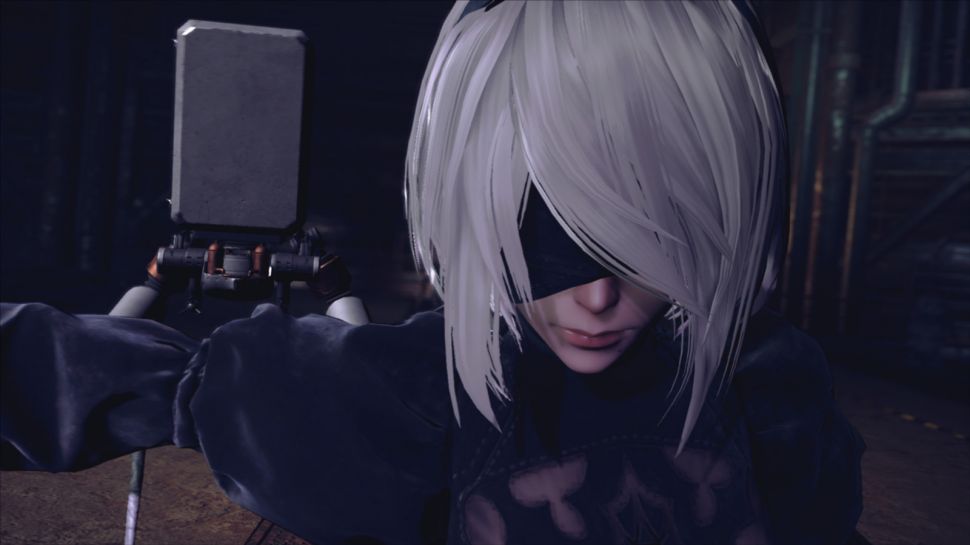 I’ve talked a lot about the action elements of the game, since that’s what I got to experience in the demo, however Saito-san assured me the final game would contain many traditional RPG elements as well. For one thing, your character’s stats, weapons, and support pod are all upgradable and will make them more useful. Nier: Automata will take place in a massive open-world you can explore, complete with main storyline quests to progress the game, and tons of optional side quests you can take on. There will also be quieter downtime moments in camp-like or city-like areas where you can talk with NPCs, purchase items, and sell items you’ve collected along your journey.
I’ve talked a lot about the action elements of the game, since that’s what I got to experience in the demo, however Saito-san assured me the final game would contain many traditional RPG elements as well. For one thing, your character’s stats, weapons, and support pod are all upgradable and will make them more useful. Nier: Automata will take place in a massive open-world you can explore, complete with main storyline quests to progress the game, and tons of optional side quests you can take on. There will also be quieter downtime moments in camp-like or city-like areas where you can talk with NPCs, purchase items, and sell items you’ve collected along your journey.
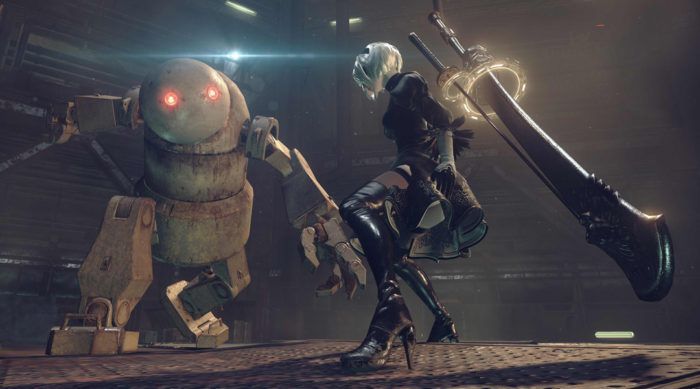 Final Thoughts
Final Thoughts
Playing Nier: Automata was an incredible experience, not only because the game is looking extremely polished and impressive at this stage, but because Square Enix has been so protective of this game since its announcement at E3 last year. I was excited to learn towards the tail-end of our meeting that a public demo of Nier: Automata is expected to be later this year, or in early 2017, so fans can look forward to that. I have to say, over and above the stellar graphics, captivating (and melancholic) game world, and vastly improved gameplay, the most exciting part for me was just how intriguing the new android characters were. Designed by legendary artist Akihiko Yoshida, best known for his character work on games like Final Fantasy XIV: A Realm Reborn and the Bravely Default series, both 2B and 9S have ultra cool looks that will appeal to many RPG and action fans alike. Saito-san also teased that a third robot, a female with long white hair named A2, will appear in the game, but as to what role she has, or anything else about her, that’s still a secret.
We’re still waiting for a firm release date in North America, but we do know NieR: Automata is expected to release in “early 2017” according to Square Enix, and the Japanese release date has been set for February 23, 2017. While the exact date might currently not be known, one thing that you can bet on is when it does come out, action-RPG fans will have an incredible game experience waiting for them to play.



